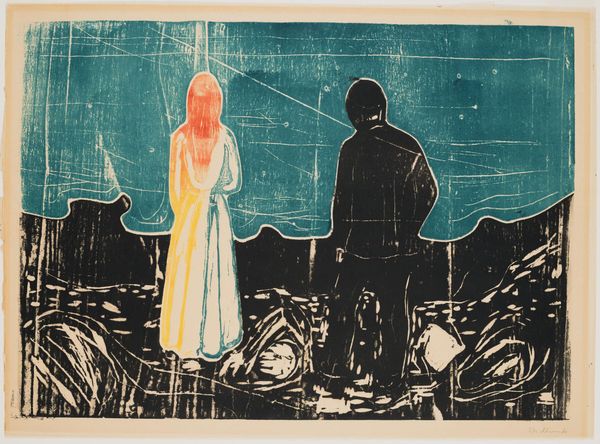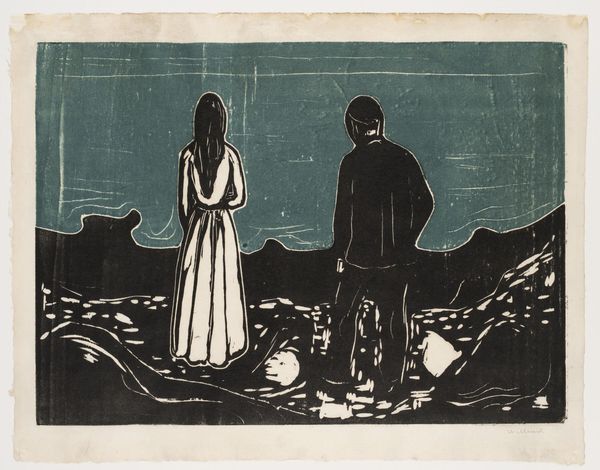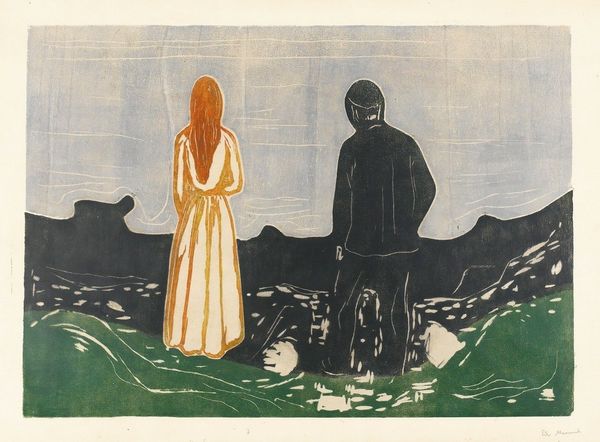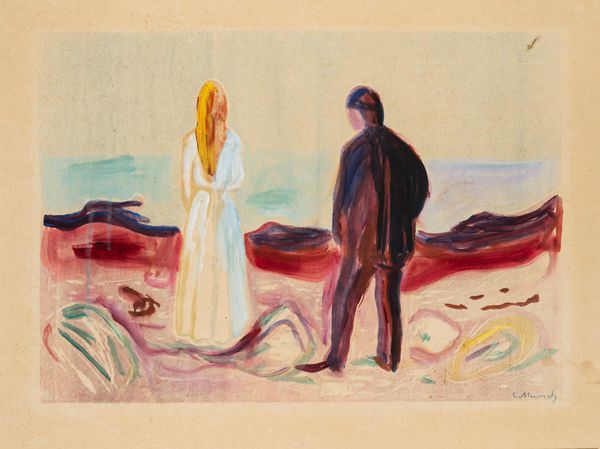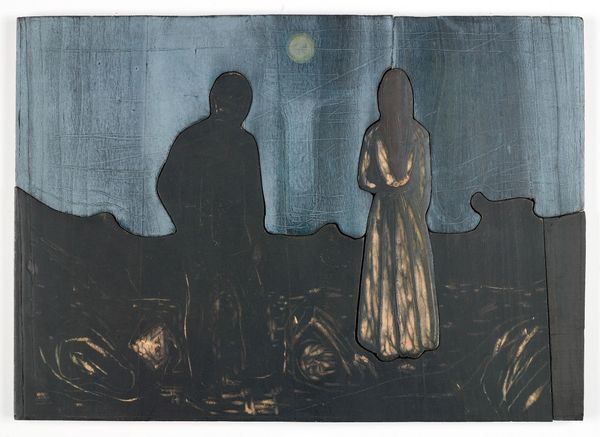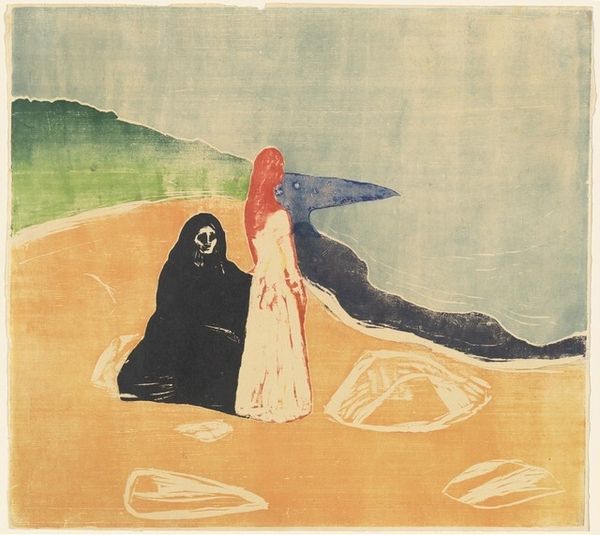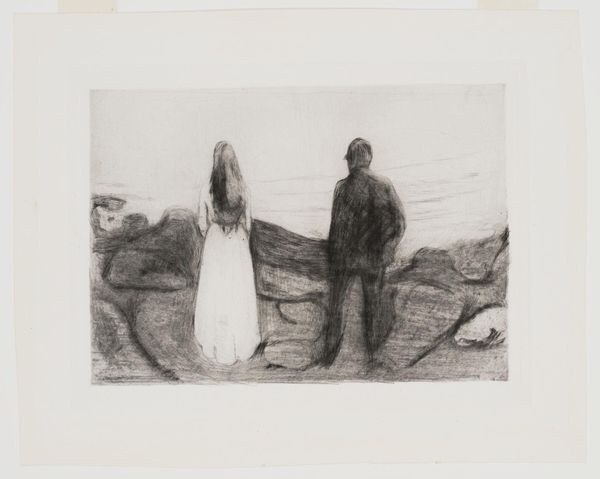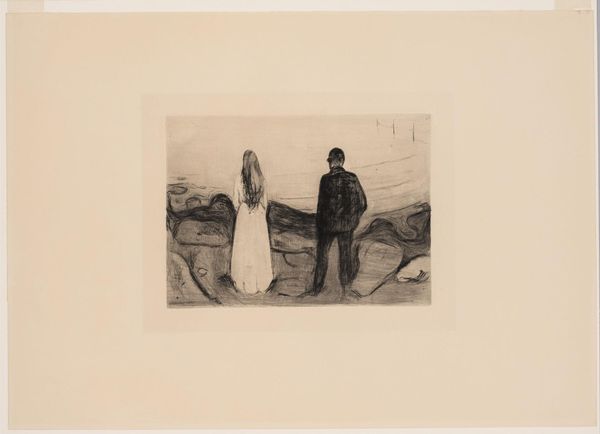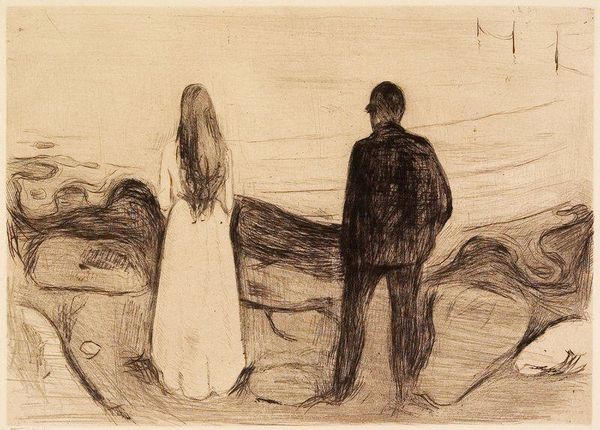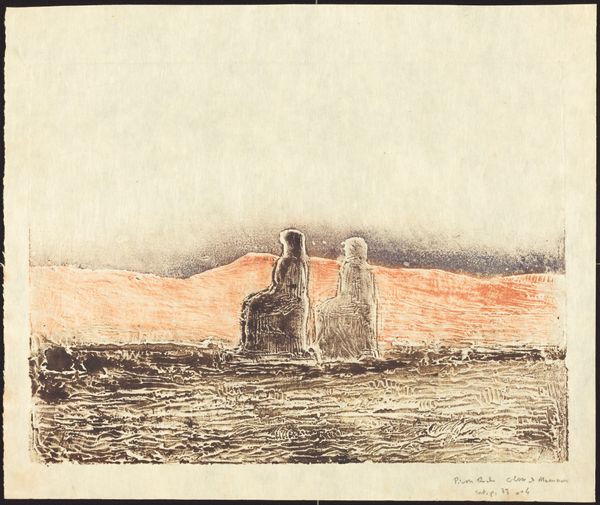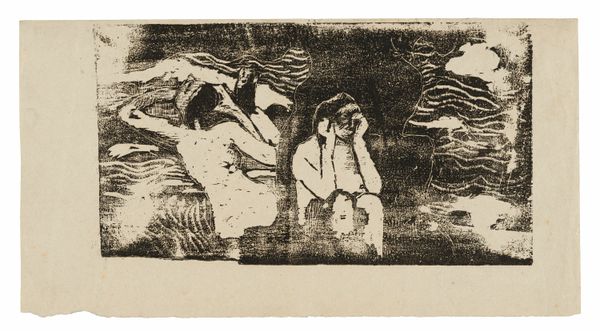
Dimensions: image: 39.4 Ã 55.6 cm (15 1/2 Ã 21 7/8 in.) sheet: 44.9 Ã 61.1 cm (17 11/16 Ã 24 1/16 in.)
Copyright: CC0 1.0
Curator: Edvard Munch's "Two Human Beings (The Lonely Ones)," which resides here at Harvard Art Museums, offers a stark look at isolation. What's your immediate reaction to it? Editor: The figures really evoke a sense of profound disconnection. They stand side-by-side, yet worlds apart; their posture and averted gazes amplify a feeling of sadness. Curator: Munch often used art to explore psychological states. Notice the landscape—it's abstracted, almost mirroring the internal turmoil of the figures. It reflects the socio-political alienation felt by many during the rise of modernity. Editor: Absolutely. The woman's bright hair is almost a halo, contrasting with the man's darkened form. That blonde hair could symbolize a lost innocence, a light dimmed by their shared loneliness. Curator: Munch aimed to depict the universality of human emotions. He even revisited this theme of isolation throughout his career. This shows us how these feelings are ingrained in our experience and society. Editor: It's a powerful visual statement. Munch understood how to externalize inner experience through emotionally charged imagery. The symbolism hits hard. Curator: Indeed, it's a stark reflection on the human condition. Editor: A reminder that even in proximity, we can be profoundly alone.
Comments
No comments
Be the first to comment and join the conversation on the ultimate creative platform.
